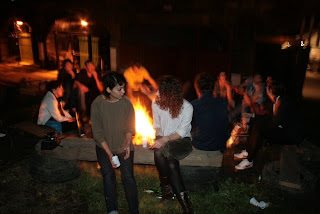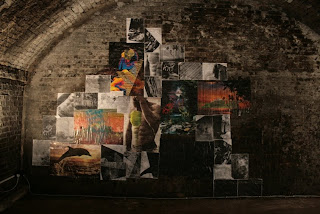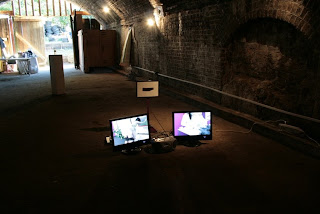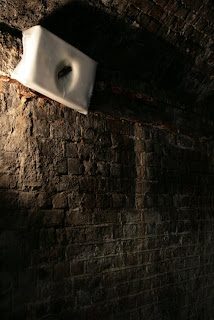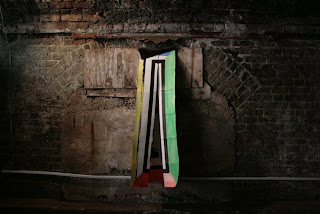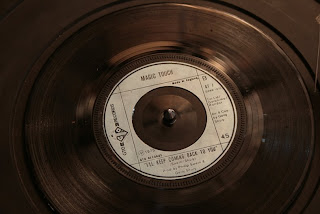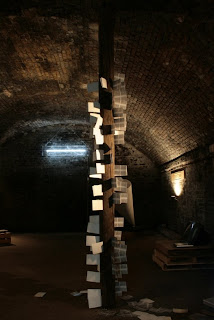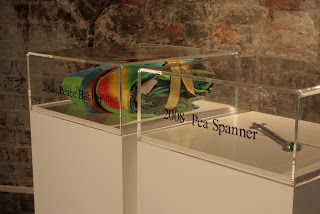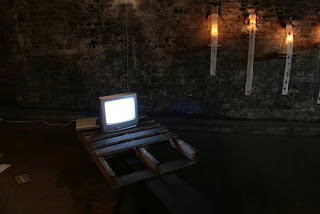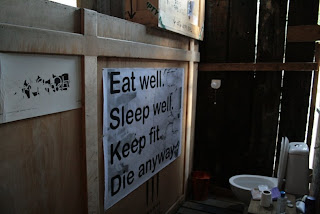The broad theme of this exhibition is nothing. Or, to be more precise, there is both the theme of nothing, nothingness, the void, lack, the gap and at the same time there is no theme. The idea ‘theme’ stands in for the excuse, the reason for collecting a group of otherwise disparate artists together under one banner title and in one show. In truth the theme disappears through its production. Through the production of the work, which make no attempts to remain within thematic boundaries, and through the production of the discourse around the work. The questions raised at the beginning of the process of making this show were more or less “How to do a show which is shifted, or destroyed by the curatorial intervention?” and “How to curate a show that existed prior to the curator’s engagement?”. This exhibition, or part of it at least was given to us readymade. What we then proceeded to do was complicate it with conceptual wranglings and antagonistic engagements. We gave up a section of our responsibilities as curators by disengaging with the selection process and letting an element of the chance encounter decide the inclusion of the artists. We de-selected ourselves from the procedure of making the selection of artists and allowed anyone in who wanted to take part. Some came and went and the project stalled and stuttered but something concrete has been realised. What this something is, however, remains to be seen. What was given to us was a manque, failure or miss in French, or more precisely, two; manque manque. A double miss. The idea being that one misses missing. One fails at failing. Manqeé Manque was the title of the project presented to us and one we changed. We missed this double miss. So, there was this idea at the core of our discussions that we would focus on a lack, or a failure. Yet we avoided the lack by turning from it to our current title. For Those Killed In Ambush came at a time we had abandoned or retreated from Manque Manque, and complicates our engagement with the show. There are a number of registers here to work through. The first question to ask would be, who is it that gets killed? The statement doesn’t express the unlucky ones; is it the ambusher or ambushee? All that is known is that someone or some people have been killed and this exhibition stands in for a memorial for them. But also, For Those Killed in Ambush misses something. Who is the precise subject that is commemorated here? Are all deaths during all ambushes memorialised? This seems an over generalised sentiment, surely the point of a memorial is to name the dead, and thus instil them in our collective memory, where here, they are left unnamed and unnameable. But, also, is it a memorial to an already existing artwork? Or rather, less a memorial, more a tribute. The title is taken from Dan Flavin’s piece Those Killed in Ambush, which is already a memorial of sorts to soldiers killed in Vietnam. In Flavin’s piece the blood red florescent tubes form a crossbow when viewed from the front, and a cross in the reflection on the floor. Acting as a homage, perhaps, to Flavin’s piece, or to the unnameable dead in this most particular of martial acts, For Those Killed in Ambush would be peculiar and not wholly satisfying. Already Flavin’s piece marks out a territory of unnamed victims, but Flavin would regularly dedicate his work to, for example his younger brother David, who died of polio, or Vladimir Tatlin or many other artists (Don Judd, Henri Matisse, Ad Reinhardt, Piet Mondrian (who lacked green) etc), friends, collegues etc. In fact, the full title to Flavin’s piece is monument 4 for those who have been killed in ambush (to P.K. who reminded me about death) 2/3, 1966, and is therefore a dedication to P.K. as well as to the victims of the ambush. So, why dedicate something twice? Is P.K. a victim of an ambush? Are we making a three fold dedication or memorial to the unknown P.K. and the unnamed dead of the Vietnam war, as well as to Flavin’s light work? And what can be said of the Ambush? A strategic device deployed very often when in retreat or in smaller numbers, and usually in a tactically advantageous location. For an ideal Ambush the victims would be forced into a narrow and difficult to defend geographical feature, such as a ravine or forest path, giving the attackers the strategic advantage as well as the element of surprise to overwhelm the victim’s superior firepower. In fiction as well as films the phrase ‘cut them off at the pass’ is uttered to indicate the plan to stage an ambush. The pass indicating the strategically advantageous geographical location. But also, the desire to cut them off at the pass, to cut their progress at the point at which they should be moving - to pass is to move beyond, to overcome or exceed - is the desire to halt their progress at the point at which they outdo you. To cut them off at the pass, then is to stop them not just before they get away, but before they get the better of you. Pass also, said in French (in a French accent) distorts to pas, which becomes, in English, not. The ambush takes place in the not, the void, takes its place in the void, is placed in the void. The ambush, then, re-installs the void into the exhibition, the void that was removed, or negated (the negation that was negated - this is a dialectical movement). The title then reads For Those Killed in Ambush that Took Place in the Void, the Lack, the Hole. © Tom Trevatt, 2008






